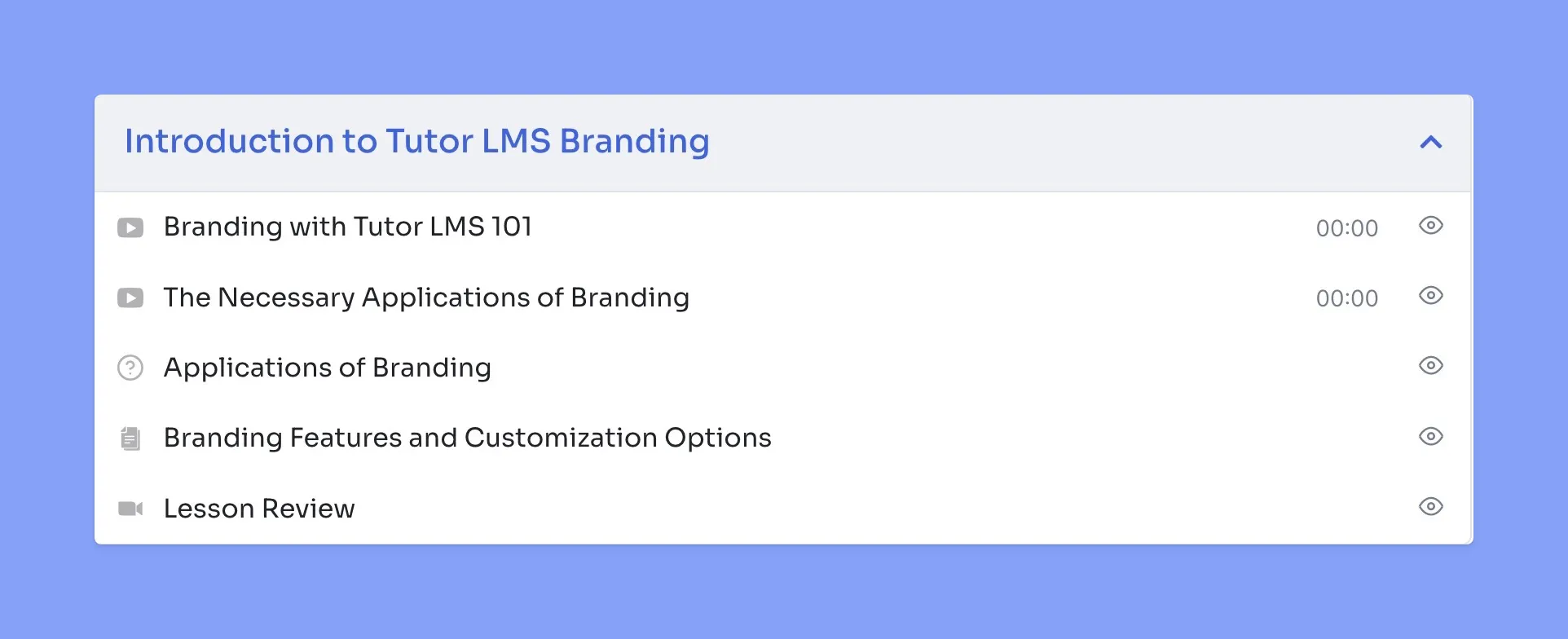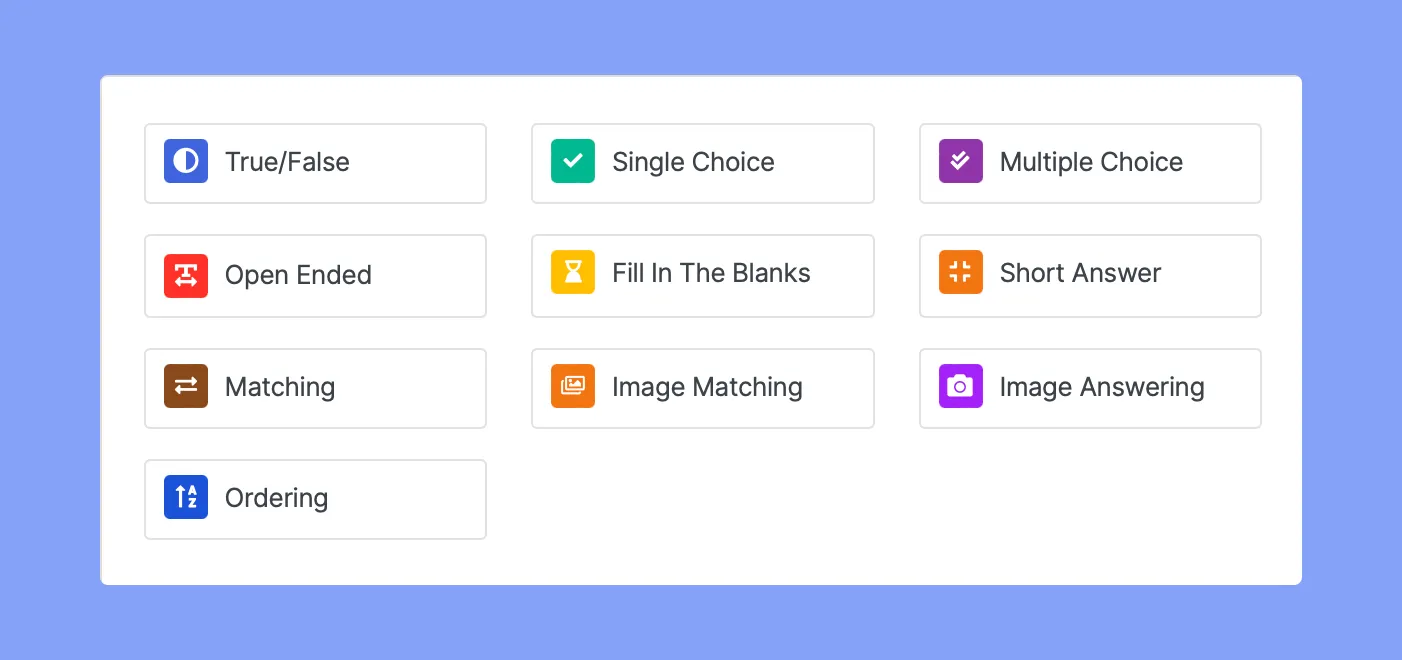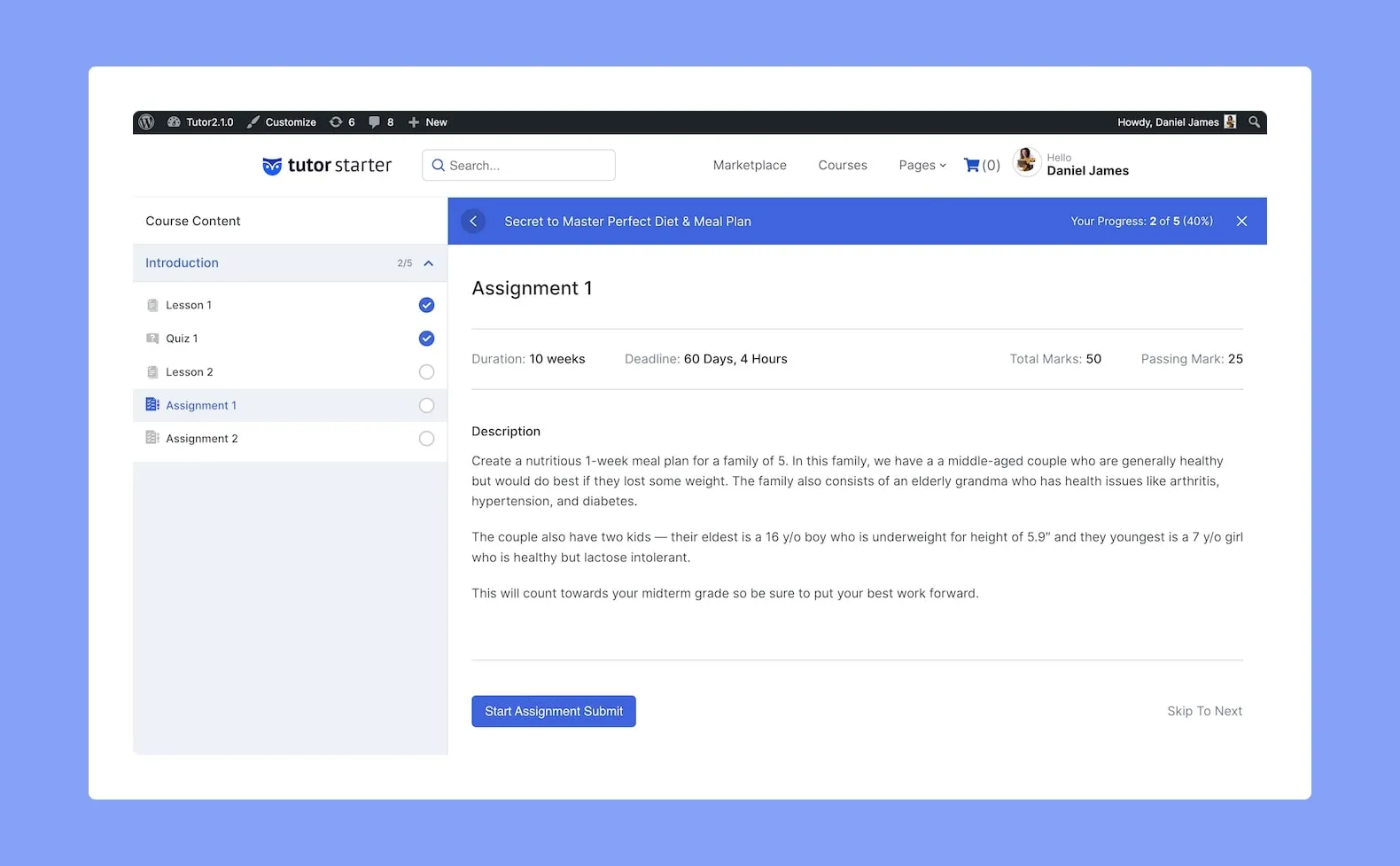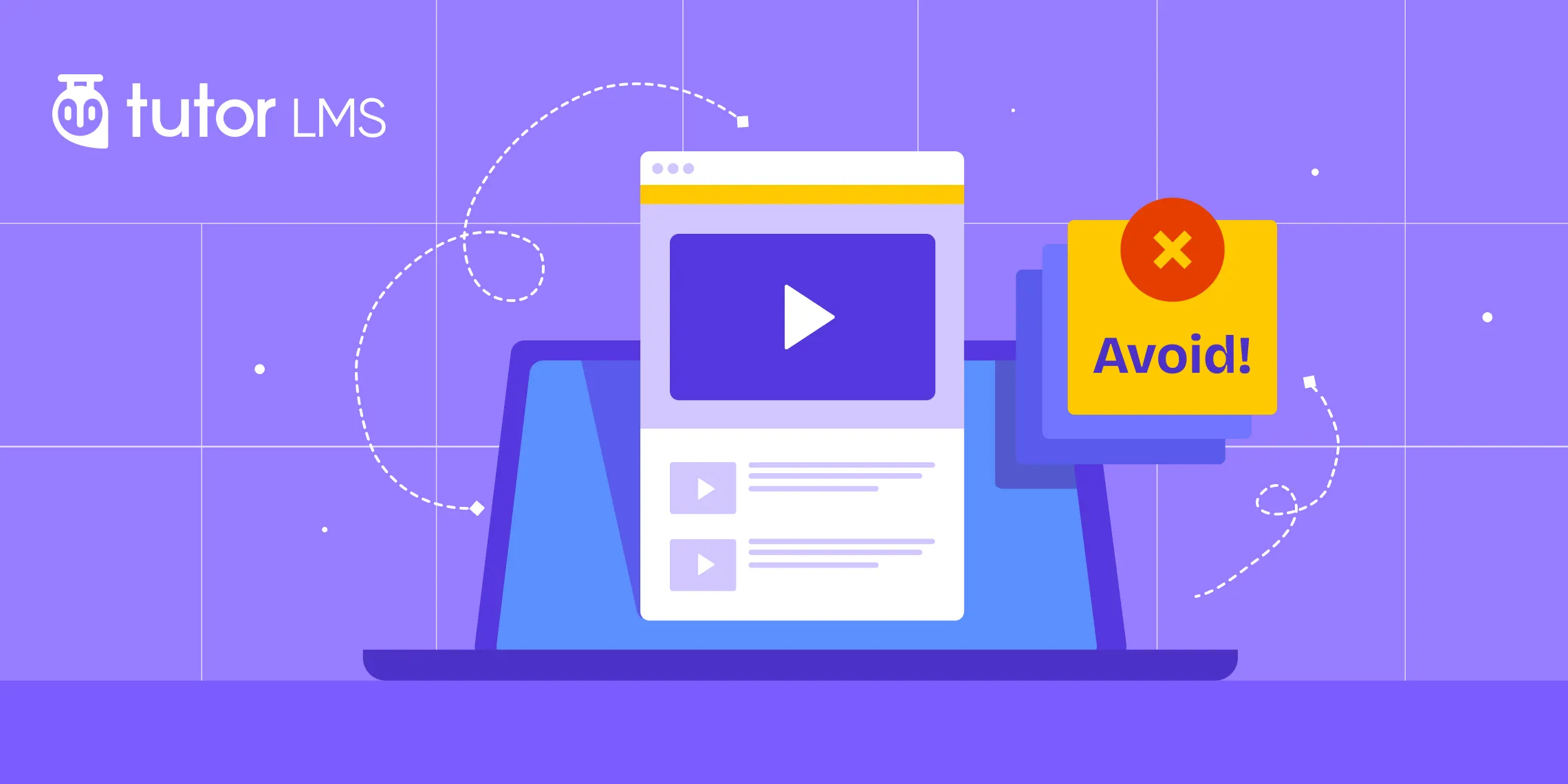Ever launched an online course, only to see most of your students vanish into thin air? You’re not alone. It’s a harsh reality. Completion rates for online courses hover around a measly 5-15%. Ouch!
But don’t despair just yet. We have some good news too. More focused, structured courses boast an impressive completion rate, some as high as 85%! Turns out, some common mistakes can sabotage your course’s success.
The silver lining is that most of these mistakes are entirely preventable! Knowing what to watch out for, you can set your online courses up for success, resulting in happier learners and better outcomes for you as a creator.
Ready to dive into those common mistakes? Let’s get started!
How to Avoid Common Online Course Mistakes
It can feel very frustrating when you sign up for an online course with high hopes, only to find it’s a jumbled mess or way too basic. Sadly, online courses aren’t always designed with the learner in mind. Think about it – poorly planned lessons, zero interaction, and a confusing layout… it’s enough to zap all your motivation to tackle those extra practice problems.
But once you become aware of those common “uh-oh” moments in course creation, you can start spotting them a mile away. Whether you’re building a course or just want to be a savvy learner, let’s dive into those classic course mistakes and how to avoid them.
Course Mistake #1: Flying Blind – No Clear Learning Objectives
A well-designed course starts with a clear road map: its learning objectives. These objectives outline the knowledge and skills learners will acquire by the end of the course. Just as a road trip without a destination can lead to confusion and frustration, a course lacking clear learning objectives can leave learners feeling lost and unsure of what they are supposed to learn.
Course creators also need that roadmap! Objectives help them stay focused, pick the right content, design practice activities, and figure out how to test if learners have actually learned the skills.
What Happens When Objectives Are Fuzzy?
Here’s the trouble with vague objectives:
- Unfocused Content: You might cram in too much, or miss the mark entirely.
- Hard to Measure Success: How do you know if students really learned if you weren’t aiming for something specific?
- Frustration All Around: Learners get demotivated when things feel aimless, and you might feel like you’re getting nowhere.
The Fix: Get SMART About Your Goals
So, how do you craft those inspiring objectives? Remember the acronym SMART:
- Specific: Objectives should clearly outline the specific knowledge or skills students will gain. For instance, instead of an unclear objective like ‘learn to cook,’ a more specific objective might be ‘prepare a three-course meal using basic culinary techniques.’
- Measurable: Goals should be defined in a way that allows instructors to assess whether students have achieved them. This often involves including verbs that indicate observable skills, such as ‘analyze,’ ‘compare,’ or ‘create.’
- Achievable: The objectives should be realistic and attainable within the timeframe of the course. Consider the time constraints and student skill levels when preparing objectives.
- Relevant: Objectives should connect to the overall learning goals of the course and be meaningful to learners. They should equip learners with knowledge and skills that are applicable beyond the classroom.
- Time-bound: Objectives should specify a timeframe for mastery. When will students be expected to demonstrate their understanding of this objective? By the end of the lesson? The halfway point?
With SMART objectives in place, the course has direction and purpose.

Course Mistake #2: The Brain Freeze of Content Overload
When creating an online course, it is easy to get carried away with the excitement of sharing your knowledge and expertise. But before you toss in an entire encyclopedia’s worth of info on your poor learners let’s talk about something called “cognitive overload.”
Why Content Overload is a Learning Nightmare
Our brains have limits, they can only process so much at once. When courses bombard learners with walls of text, complicated diagrams, and endless facts to memorize, it’s the mental equivalent of trying to fit a huge beach ball into a tiny backpack.
This overload can make learners want to give up before even trying. Learners can get confused, lose their focus, and seriously start wondering if they signed up for the right course. And even if they muscle through the content, chances are they won’t remember much of it later.
Strategies to Save the Day
Here’s the thing, learning should be helpful, not headache-inducing. Let’s rescue your learners from information overload with a few key strategies:
- Bite-Sized Learning is Best: Break those big, scary topics into smaller, manageable pieces. Short videos, digestible summaries, and bite-sized explanations are your friends.
- Prioritize the Information: Cut out anything that’s not absolutely essential for understanding the key concept. More content doesn’t always equal better learning.
- Variety is Key: Don’t just dump a wall of text at your learners! Mix in short videos, snappy summaries, quick quizzes, and hands-on activities to keep things interesting and help the information stick.

Remember, sometimes less is more when it comes to learning. By keeping things digestible and engaging, your students are way more likely to succeed!
Now that we’ve tackled the issue of overwhelming content, let’s shift our focus to another critical aspect of online learning: keeping your students actively engaged.
Course Mistake #3: Neglecting Learner Engagement
Let’s talk about one of the biggest pitfalls in online course creation: neglecting learner engagement. It’s more than just keeping your students entertained; it’s about creating an experience where they’re actively participating, absorbing knowledge, and feeling a sense of accomplishment.
What is learner engagement, exactly?
It’s the level of interest, enthusiasm, and active participation your learners show in your course. When learners are engaged, they’re not just passively consuming content, they’re actively thinking, questioning, and applying what they’ve learned. And that’s crucial for your course’s success.
The Consequences of Low Engagement
Low engagement can lead to:
- Boredom: This is a surefire way to lose your learners’ attention and motivation.
- Increased dropout rates: Studies show that completion rates for online courses can be as low as 15%. Engaging your learners can help keep them on track.
- Lack of knowledge transfer: If your learners aren’t interested, they won’t be able to apply what they’ve learned to real-world situations.
Actionable Techniques to Boost Engagement
You’ll be happy to hear that there are plenty of ways to keep your learners occupied and excited about your course. Here are a few of our favorites:
- Incorporate interactive elements: Quizzes, polls, and scenario-based questions can all help to break up the monotony of traditional lectures and keep learners on their toes.
- Encourage discussion forums and peer interaction: Learning is a social activity. Give your learners the opportunity to connect with each other and share their ideas.
- Leverage gamification where appropriate: Points, badges, and leaderboards can be a fun and effective way to motivate learners and make your course feel more like a game than a chore.
- Offer regular, constructive feedback: Everyone likes to know how they’re doing. Timely and personalized feedback can help your learners stay motivated and on track.
Remember, an engaged learner is more likely to succeed, share their positive experience, and even become a brand advocate for your courses.
Course Mistake #4: Poor Production Quality (Audio/Visual) – The Silent Course Killer
You’ve poured your heart and expertise into creating a stellar online course. But the thing is if your audio or visuals are subpar, your hard work could easily go unnoticed.
Think about it. Have you ever clicked away from a video because the sound was muffled or the image was pixelated? We all have! And your learners are no different. Poor production quality can make your course feel unprofessional, amateurish, and just plain hard to follow. It erodes trust and can make even the most valuable content seem less credible.
What’s exciting is you don’t need a Hollywood budget to create high-quality course content. Here are a few simple tips to get you started:
- Invest in a decent microphone: Crystal-clear audio is a must. A good microphone doesn’t have to break the bank, and it will make a world of difference in your sound quality.
- Set the scene: For videos, pay attention to lighting and background. Choose a well-lit, quiet space, and keep the background simple and uncluttered.
- Edit like a pro (or close enough): Most screencasting software has built-in tools. Use them to trim out those awkward pauses or any distracting background noises
- Keep it clean and simple: Stick to a consistent, easy-on-the-eyes design. Don’t go overboard with fonts and colors, and make sure your slides aren’t cluttered and easy to read.
Remember, a polished course shows your students you care about their experience. It makes learning more enjoyable and easier to follow. Happy students are more likely to stick around, learn more, and maybe even recommend your course to others!
High-quality content is a great start, but to truly ensure your learners are getting the most out of your course, it’s essential to incorporate robust assessment and feedback mechanisms.
Course Mistake #5: Failing to Incorporate Assessment and Feedback
Completing a course isn’t the same as truly mastering its content. Robust assessments, on the other hand, turn learners into active participants, not just passive consumers. They challenge students to apply their knowledge, solidify their understanding, and identify areas where they need a little extra support.
To avoid this mistake a robust assessment strategy is crucial. They help learners (and you!) gauge progress, identify strengths, and pinpoint areas for improvement. This is where the magic of formative and summative assessment comes in:
Formative assessment: Think of these as checkpoints along the way. Short quizzes, interactive exercises, or even informal polls can help you gauge understanding and adjust your teaching as needed.

Summative assessment: These happen at the end of a module or course. They’re designed to measure overall learning and mastery. Examples include projects, presentations, or comprehensive exams.

Timely, constructive feedback is also a game-changer. It reinforces what students are doing well, pinpoints areas for improvement, and motivates them to keep going.
Here are a few ideas for incorporating feedback into your course:
- Self-assessment quizzes: Provide answer keys with explanations so students can learn from their mistakes.
- Peer-reviewed assignments: Encourage learners to give each other constructive feedback – it’s a valuable learning experience for everyone involved.
- Instructor feedback: Offer personalized feedback on major assignments or projects. A few thoughtful comments can go a long way in boosting confidence and improving learning outcomes.
Remember, assessment and feedback aren’t just about grades; they’re about creating a meaningful and effective learning experience. So, don’t leave your students in the dark, guide them along their learning journey with clear milestones and valuable insights. After all, an engaged and empowered learner is a successful learner.
Wrapping It Up: Your Recipe for Online Course Success
You have the knowledge, the passion, and now, the know-how to avoid those common pitfalls that can hinder even the most seasoned course creators. Remember, creating a successful online course is about more than just great content. It’s about fostering engagement, delivering information in bite-sized chunks, and ensuring your learners stay motivated throughout their journey.
But don’t worry, you don’t have to go it alone. Tutor LMS, one of the best WordPress LMS plugins, is here to empower you with the features and support you need to create a course that truly shines. From interactive quizzes and assignments to intuitive progress tracking, Tutor LMS equips you with everything you need to engage your learners, assess their progress, and deliver a top-notch educational experience.
So, are you ready to put these lessons into action? Take that leap of faith, apply these tips, and start building your online course with Tutor LMS.
Table of Contents
- How to Avoid Common Online Course Mistakes
- Course Mistake #1: Flying Blind – No Clear Learning Objectives
- Course Mistake #2: The Brain Freeze of Content Overload
- Course Mistake #3: Neglecting Learner Engagement
- Course Mistake #4: Poor Production Quality (Audio/Visual) – The Silent Course Killer
- Course Mistake #5: Failing to Incorporate Assessment and Feedback
- Wrapping It Up: Your Recipe for Online Course Success
Start Using Tutor LMS Today
Ready to take your online courses to new heights? Download Tutor LMS now and enjoy a journey of eLearning excellence.
